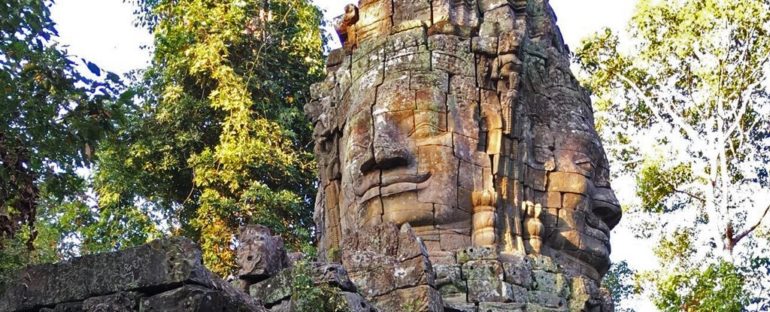There’s a pervasive notion in our society that nature is something outside, over there, other, from what we are as humans.
From religious texts teaching that God provided humans with dominion over Earth, to futuristic literature pitching nature as our past and human ingenuity and technology as our future, the narrative that humans are beyond – or even superior to – nature is deeply entrenched.
This separation, this othering of nature, has arguably enabled our rampant destruction of the rest of the living world, and even led some to claim that our human nature is incompatible with nature itself.
Now a huge international study involving geography, archeology, ecology, and conservation adds to the wealth of sciences that exposes this idea as the lie it is.
Researchers found that for most of our history, humanity has lived in equilibrium with our world, despite us having altered most of Earth’s terrestrial surface far sooner than we realized.
“Societies used their landscapes in ways that sustained most of their native biodiversity and even increased their biodiversity, productivity, and resilience,” said University of Maryland environmental systems scientist Erle Ellis.
Analyzing reconstructions of historic global land use by humans and comparing this to global patterns of biodiversity, the researchers found that by 10000 BCE humans had transformed nearly three-quarters of Earth’s land surface – you can view an interactive map of their findings here.
This upends previous models that suggested most land was still uninhabited as recently as 1500 CE.
“Lands now characterized as ‘natural’, ‘intact’, and ‘wild’ generally exhibit long histories of human use,” University of Queensland conservation scientist James Watson explained.
“Even 12,000 years ago, most of Earth’s land had been shaped by humans, including more than 95 percent of temperate lands and 90 percent of tropical woodlands.”
The shaping describes system level changes that have cascading ecological consequences, including negative outcomes such as the extinction of megafauna.
Yet these interventions also provided important ecological functions like seed dispersal and improvement of soil nutrients. This expanded habitats for other plant and animal species and increased biodiversity.
Nonetheless, the problematic idea that we’re separate from nature has even infiltrated those fighting to slow our destruction of it.
“There’s a paradigm among natural scientists, conservationists, and policymakers that human transformation of terrestrial nature is mostly recent and inherently destructive,” said Watson.
In recent times, it’s certainly appeared that way, but clearly this hasn’t always been the case – humanity’s presence hasn’t always caused the life around us to wither away. The researchers note that in many areas, mosaics of diverse landscapes managed by people were sustained for millennia.
They used strategies like planting, animal domestication, and managing the ecosystems in a way that made the landscape not just more productive for us, but helping to support high species richness too.
“Our study found a close correlation between areas of high biodiversity and areas long occupied by Indigenous and traditional peoples,” said Max Planck Institute archeologist Nicole Boivin.
“The problem is not human use per se, the problem is the kind of land use we see in industrialized societies – characterized by unsustainable agricultural practices and unmitigated extraction and appropriation.”
What’s more, in areas now characterized as natural, current high-diversity regions are more highly correlated with this historic land use than with current land use patterns.
“We need to recognize that some types of human activity – particularly more traditional land management practices that we see in the archaeological record or practiced today by many Indigenous peoples – are actually really supportive of biodiversity. We need to promote and empower that,” said Bovin.
University of Maine anthropologist Darren Ranco noted that while indigenous people manage around 5 percent of the world’s lands that currently contain 80 percent of the world’s biodiversity, they have been excluded from management and access in protected areas like the US National Parks.
These findings make it clear that we need to empower Indigenous, traditional, and local peoples who know their lands in ways science is only just beginning to understand, explained Ellis.
While no one is suggesting we revert to technology-less societies of our past, the idea is to learn from different ways of living that have proven track records of longevity.
From there, we can find new and better ways forward with the help of our advanced technologies, and a big part of this is recognizing that we are part of nature just as nature is a part of us.
This research was published in PNAS.



